If you’ve ever seen old movies, or perhaps in a business operation even to this day, you might notice ‘pneumatic tubes” delivering messages or cash from the working floor to offices above or elsewhere.
The items are placed in small cylinders or ‘pods’ and then sucked or pushed through a tube to the destination.
There has long been an idea it could be expanded to move people as well, and there have been several such experiments in the distant past such as the pneumatic subway in New York City in 1870.
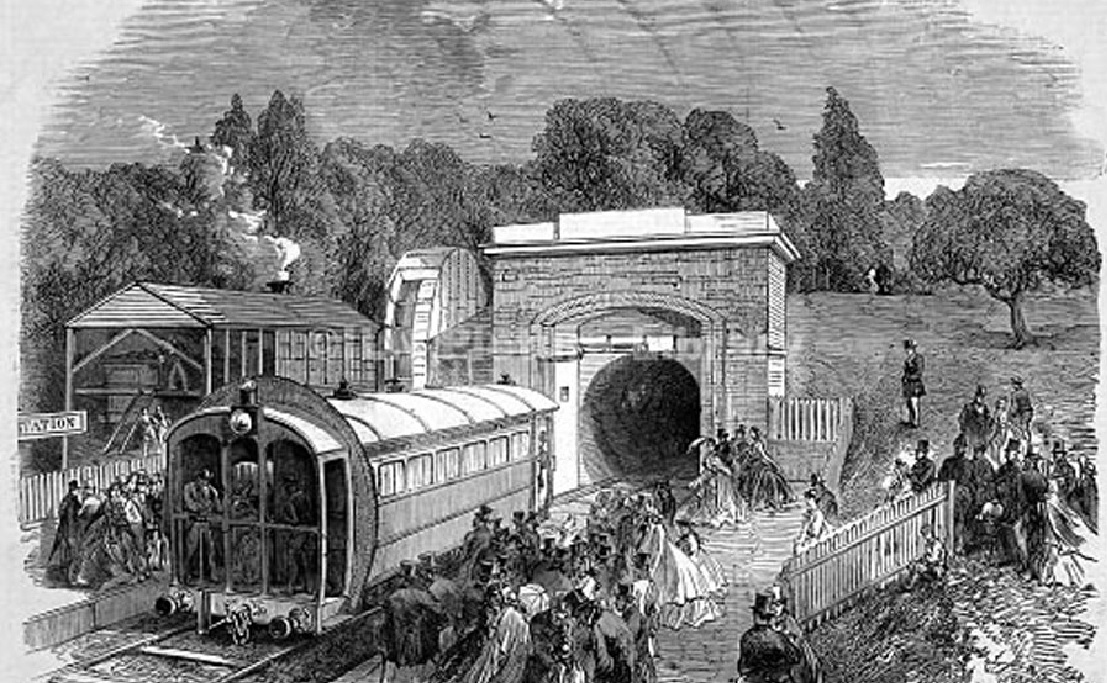
An engraving of the short lived similar pneumatic system at London’s Crystal Palace in 1864. Bristles surrounded the wagon which was either pushed or sucked through the approximately 2km tunnel by a huge fan shown at the side of the tunnel powered by a large railway steam engine. The artist may have taken some license with his rendering however (Wikimedia Commons).
That’s the basic idea of the hyperloop, although the new concept involves far more advanced technology.
Using magnetic levitation and propulsion through the low air or no air (vacuum) environment inside the tubes to reduce or eliminate air pressure resistance and friction, the passenger carrying ‘pods’ could travel at speeds up to 1,000 kilometres per hour.
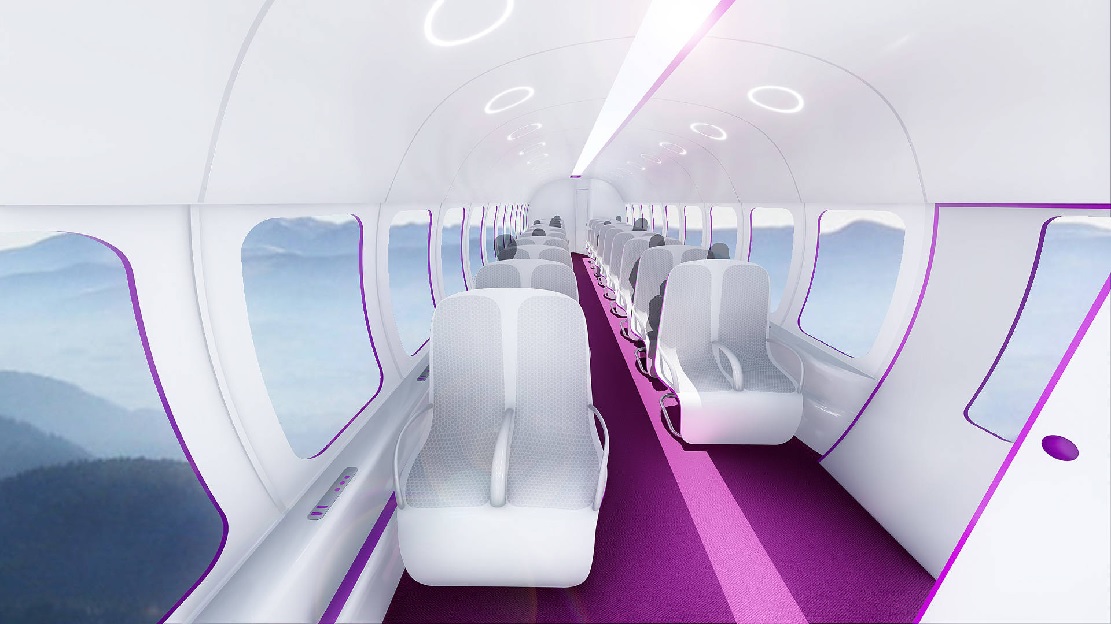
Artistic concept of a pod interior (TransPod)
Canada, the second biggest country in the world, is one of the few developed countries that doesn’t have a high speed intercity rail system. Now, it might be edging slowly toward an ultra high speed concept.
The Toronto-based company TransPod has signed a memorandum of understanding (MOU) with the Alberta government to support development of the idea. The provincial government is not investing money in the project but the MOU will allow the company to improve chances of attracting investors in the multi-billion dollar concept to develop a link between the cities of Edmonton and Calgary. Such a link would enable passengers and cargo to travel the approximate 300 km distance in about 30 minutes.
The provinces transportation ministry would also take part in discussions with institutional investors where suitable adding that if the technology is proven, the ministry would become ‘facilitators’ for the company. The province would also identify land suitable for an experimental test segment of the line. A ten kilometre portion of land had been allocated by the former provincial government for such a trial segment.
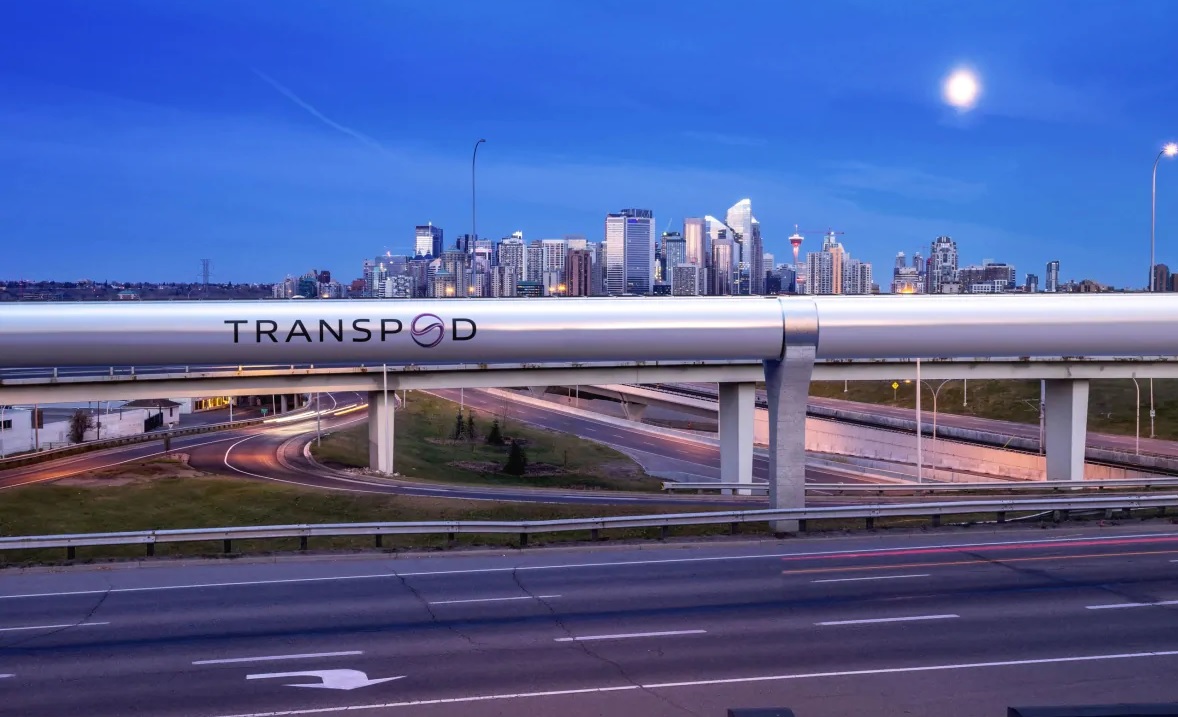
An artist’s rendering of the TransPod hyperloop against the Calgary skyline. (TransPod)
The line would cost up to an estimated $10 billion dollars. If financial viability of the line can be shown to investors, construction could begin on the $500 million test track in 2022, with construction on a full line to begin in 2025
Sebastien Gendron, co-founder and CEO of Transpod, said the company is also working on design of a test track in France.
Transpod is not the only player in this new concept. Elon Musk, founder of Tesla, indicated interest in hyperloop concepts in 2013 and created a prototype, while another billionaire, Richard Branson is working on Virgin Hyperloop One has signed a deal with Spirit AeroSystems Holdings makers of the Boeing 737 fuselage and other parts. This would give it technology for future pods with plans to start commercial operations somewhere by 2029. Spanish company Zeleros is also developing the technology.
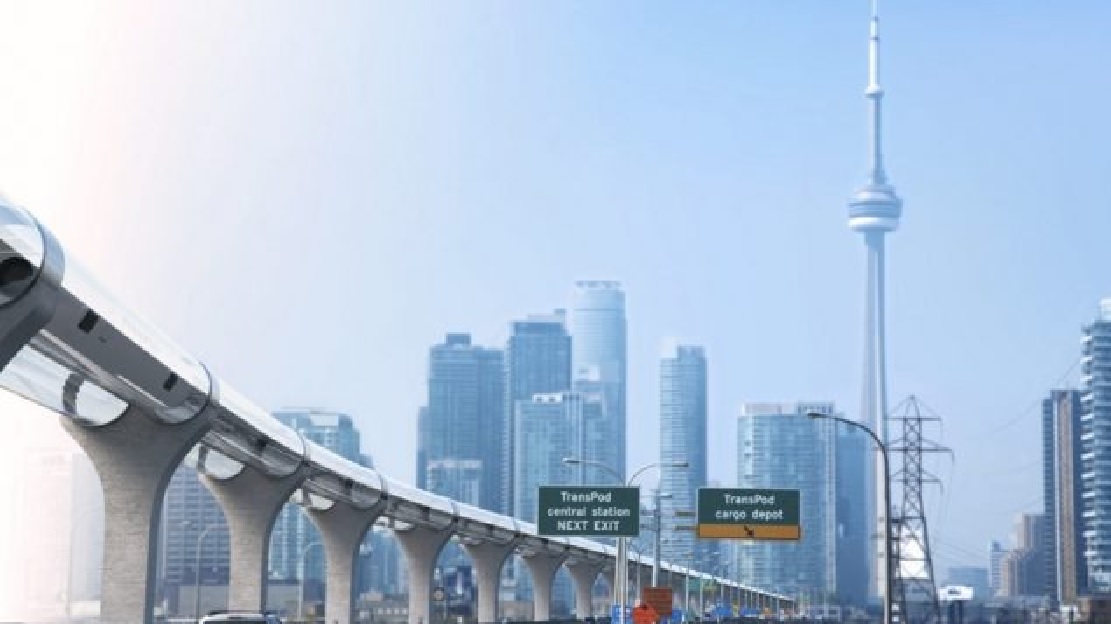
Artistic concept of a hyperloop (twinned) line for Toronto ( TransPod)
As with any new technology, there are regulatory issues that will have to be worked out in addition to the vast complexity of creating reliable, safe technology.
Super fast intercity travel could in theory threaten airlines, along with intercity bus and standard rail. A Boeing executive however cast doubts on that, at least for awhile. Randy Tinset, VP Marketing for Boeng said that while it’s a potentially viable technology, the challenges outweigh the opportunity, and probably. While it might happen someday, ‘probably not in my lifetime” ‘
additional information-sources
- CBC; T Seskus: Aug 25/20: Alberta government to support feasibility study for Edmonton-Calgary hyperloop under new agreement
- Global News: C Ramsey: Aug 25/20:Alberta government shows support for ultra-high-speed hyperloop between Edmonton and Calgary
- Globe and Mail: S Marotta: Aug 25/20: Alberta government gives green light to hyperloop project
- CNBC: N Turak: Nov 19/19: Will hyperloop threat aviation? Not in my lifetime says Boeing exec
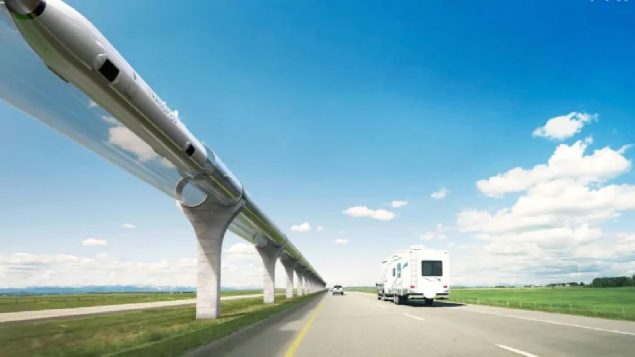






For reasons beyond our control, and for an undetermined period of time, our comment section is now closed. However, our social networks remain open to your contributions.